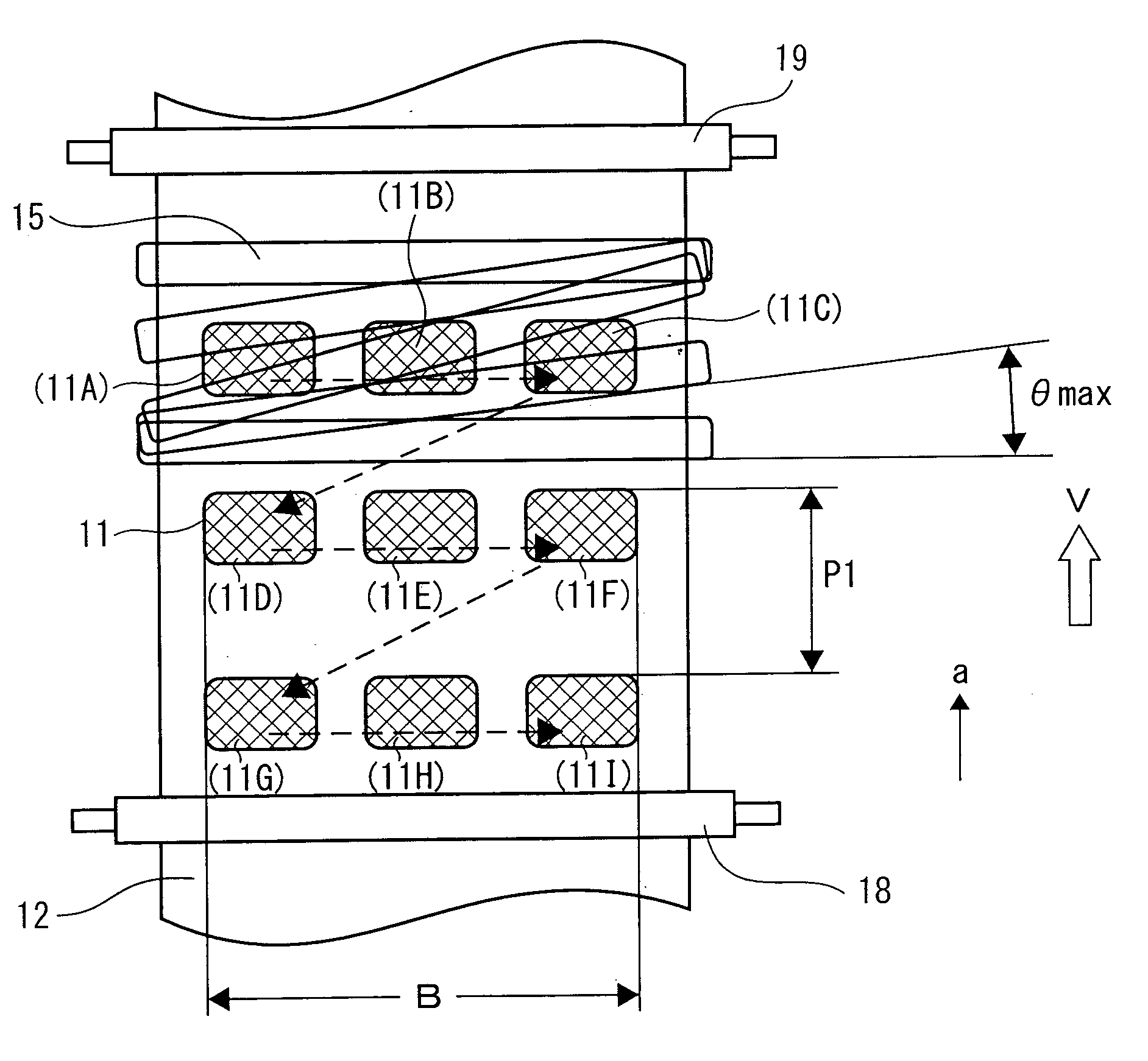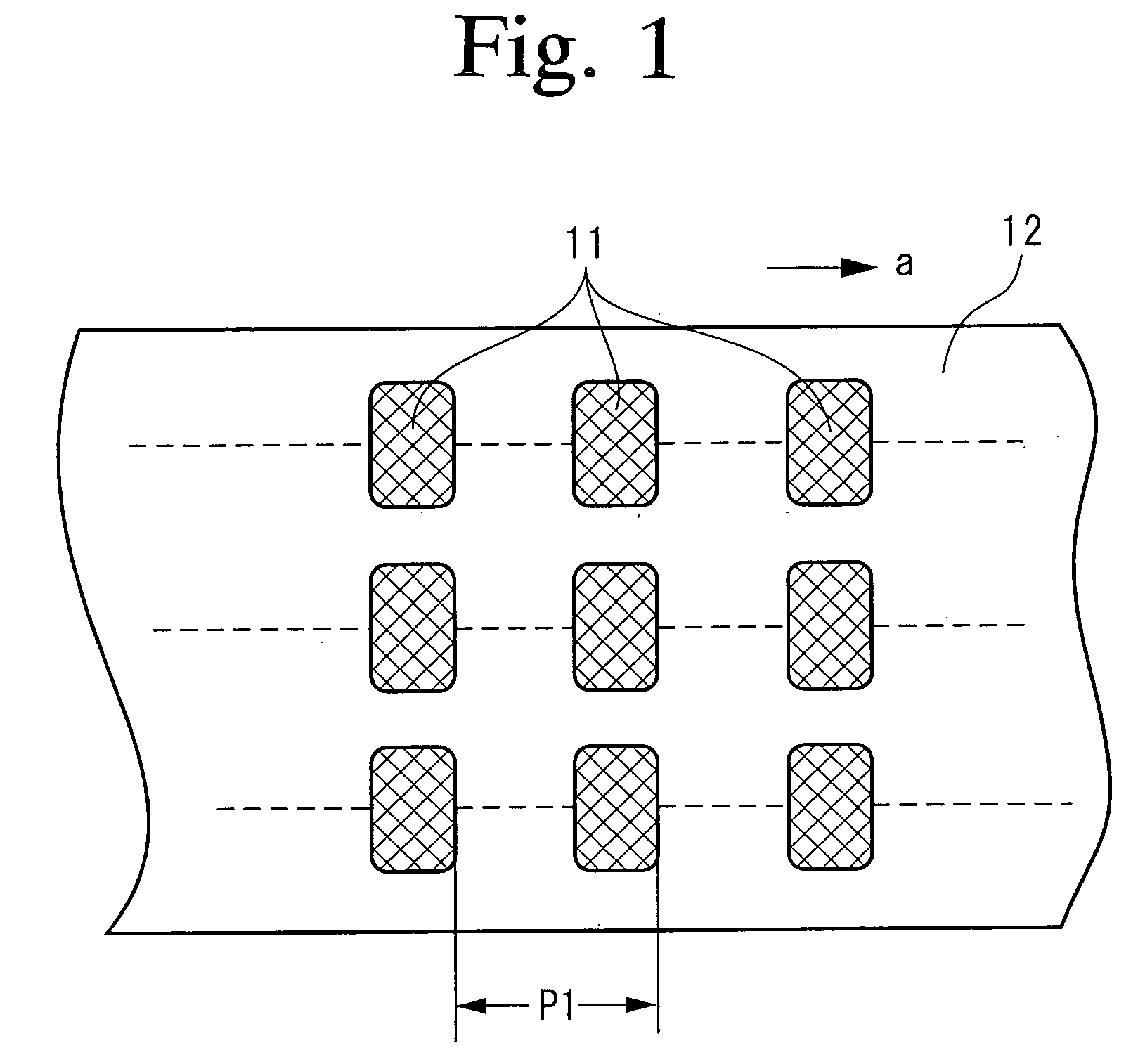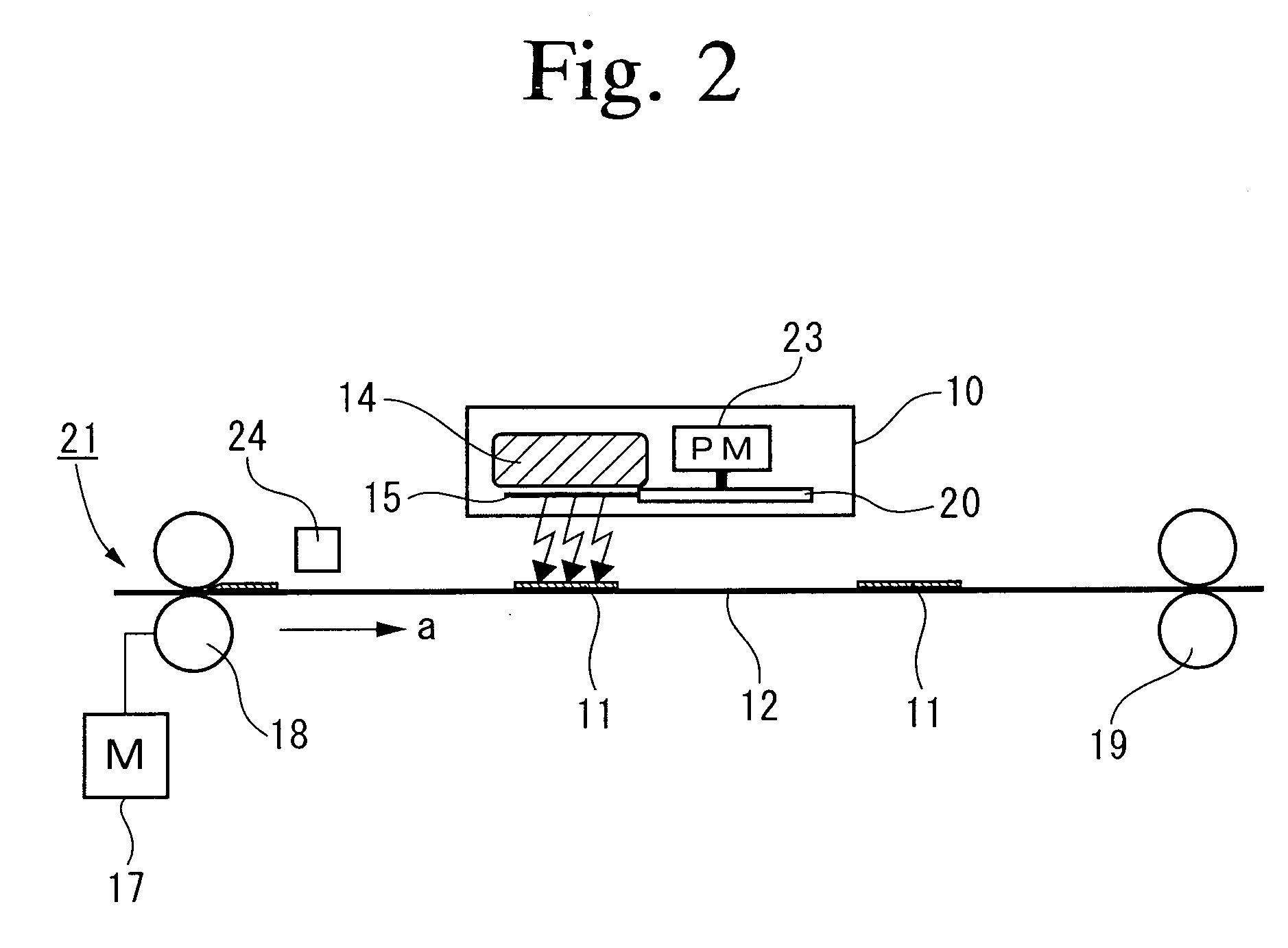Apparatus and method for data processing for IC tags and image forming device with the apparatus
a technology of image forming device and apparatus, which is applied in the field of apparatus and method for data processing of ic tags and image forming devices, can solve the problems of uncompleted reading and/or writing of information, inability to identify, and communication errors,
- Summary
- Abstract
- Description
- Claims
- Application Information
AI Technical Summary
Benefits of technology
Problems solved by technology
Method used
Image
Examples
first embodiment
[0031]FIG. 1 is a front view of a conveying medium on which IC tags are mounted. Wireless communication devices (hereinafter referred to as IC tags) 11, which will be described later, are mounted on the medium, arranged at fixed pitch p1 in multiple rows (three rows in FIG. 1) in parallel with the direction of arrow a in which the conveying medium 12 moves (the direction of conveyance of the IC tags) and in multiple columns along the direction of arrow a. The conveying medium 12 is, for example, continuous-form paper or other similar media for use in a label printer or the like, on which visible information such as desired text is printed. After electronic information is read from and / or written to the IC tags 11 by a data processing apparatus which will be described later, the medium is cut into labels with predetermined dimensions and each label having an IC tag will be stuck to a commercial product or the like. Although, by way of example, labels are produced in this embodiment, ...
second embodiment
[0072] A data processing apparatus of a second embodiment of the invention has the same reader / writer and antenna as in the first embodiment, but the antenna is not skewed. Instead, by modifying the arrangement of the IC tags on the conveying medium, each IC tag can be identified. Components corresponding to those described in the first embodiment are assigned the same reference numbers and their explanation is not repeated. The following description of the second embodiment focuses on difference from the first embodiment.
[0073] In the data processing apparatus 10 of the first embodiment, a plurality of IC tags 11 are arranged in multiple rows and columns along the direction of arrow a in which the conveying medium and the IC tags move, as shown in FIG. 6, and the apparatus is configured so that each IC tag 11 will be identified by skewing the antenna 15 of the reader / wrier 14 at the angle θ.
[0074]FIG. 9 is a diagram to explain how IC tags 11 are arranged on the conveying medium 1...
third embodiment
[0077] This section describes a data processing apparatus of a third embodiment of the invention. The above-described data processing apparatus of the first embodiment fixes the skew angle of the reader / writer antenna to a predetermined angle θ determined by calculation and reads and / or writes electronic information from / to IC tags being conveyed. On the other hand, in the third embodiment, the apparatus reads and / or writes electronic information from / to IC tags, while changing the skew angle of the reader / writer antenna in conjunction with the conveyance of the IC tags. The data processing apparatus of the third embodiment is capable of identifying each IC tag positively and reliable reading and / or writing of electronic information, even if a plurality of IC tags are arranged closely with each other on the conveying medium.
[0078]FIG. 10 is a diagram to explain identifying IC tags and sequence in which reading / writing of electronic information from / to the tags will be performed, ac...
PUM
 Login to View More
Login to View More Abstract
Description
Claims
Application Information
 Login to View More
Login to View More - R&D
- Intellectual Property
- Life Sciences
- Materials
- Tech Scout
- Unparalleled Data Quality
- Higher Quality Content
- 60% Fewer Hallucinations
Browse by: Latest US Patents, China's latest patents, Technical Efficacy Thesaurus, Application Domain, Technology Topic, Popular Technical Reports.
© 2025 PatSnap. All rights reserved.Legal|Privacy policy|Modern Slavery Act Transparency Statement|Sitemap|About US| Contact US: help@patsnap.com



